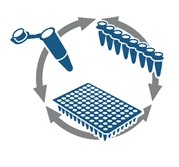
BIOplastics has assembled a range of products which are fully interchangeable with each other. A (q)PCR process optimized in one of the BIOplastics tubes, strips or plates can be transferred to any other BIOplastics tube, strip or plate. The fact that BIOplastics offers products for ALL BRANDS and models of PCR and qPCR cyclers enables the end-user to optimize the (q)PCR process using interchangeable plastics with the same properties. Using the same protocol on a different cycler is easily done by selecting the designated BIOplastics product for that model of cycler.
No need for re-optimizing the whole process since BIOplastics’ plastics characteristics are exactly the same for the whole range of the (q)PCR product line.
Thermal performance difference between cyclers, cycler models, and brands can be exactly determined using CYCLERtest® calibration service or CYCLERtest® DRIFTCON® temperature calibration tools. See also “Normalizing Standard Operation Procedures (SOP) for (q)PCR applications. Did you optimize your (q) PCR process in tube strips and need more or less capacity? Just start using BIOplastics plates, single tubes or even 384 well plates without the requirement of adjusting your protocol.
Low evaporation properties enable (q)PCR performance in low volumes which greatly reduces reagent costs (up to 60%). BIOplastics does not recommend its products to be used with volumes below 5 µl. White plates and strips do allow significant signal enhancement in qPCR. In some cases the reagents usage can be reduced due to the much higher signals achieved.
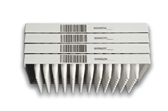

Some BIOplastics (q)PCR products are designed to fit the majority of PCR and qPCR cyclers. Similar products are available in the filter tip and pipette-tip range. Use the dynamic charts from the BIOplastics website or contact BIOplastics or its distributor for the best recommendation to suit your needs. In most cases the variety of different products within the lab can be substantially reduced leading to fewer vendors while limiting improper part selection.
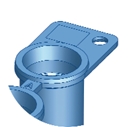
BIOplastics’ BPLPM technique results in a non removable, uniquely marked and coded product. No writing with markers, no mistakes, no removal of marks, no double identification numbers, just use the unique ID# at the beginning of your process. Link the unique ID to your Lab LIMS system and samples. BPLPM technology is used in a selected range of products and will be extended in the future and on demand. BPLPM technology is particular useful for accredited labs and in Pre-diagnostics and Diagnostic settings allowing improvement of procedures and
reducing risks of label failures. Custom layouts and customized codes are, depending on volume, available. These options are particularly useful for kit manufacturers to enable them to effectively trace products and applications.
Tubes strips are not symmetrical; many BIOplastics strips have off-center holes at top and centered holes at the bottom which provides easy orientation top-bottom. Tubes strips can be clicked on the “grid” permitting assembly of your own “plate”.
The frosted marking areas permit easy marking of tubes strips. Extra robust strips will not break and enable straight forward positioning of the strips into the cycler. Strip caps are available in extra robust formats which allows easy positioning, opening and closing. Indented optical areas reduce “touching” the optical area while closing.
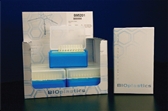
Many people are, as we, concerned about the environment in relation to the use of plastics. BIOplastics is often contacted with the assumption to have a final solution for bio-degradable plastics as these plastics are also called “bioplastics”. Be aware that we, at BIOplastics, are monitoring the development of these bio-degradable plastics carefully and are open to incorporating these plastics into our product portfolio.
The current technology status and the type of applications, typically (q)PCR, does not (yet) allow us the use of bio-degradable plastics.
However to drastically reduce the unnecessary pollution of our environment, BIOplastics has designed products that are interchangeable and can be use in a different lab application after serving the primary function. Some examples: filtertips and tip racks can be re-used as (freezer) storage containers for tubes, plates and strips. Furthermore you can use the rack to “pipette on ice” etc. The cardboard box in which the racked tips are supplied is made from recycled materials, and can be used as a display on your lab bench to organize and easily access the racks, after which it can be used as a bag holder. Plates are cutable and in some cases breakable which allows the use of only the required amount of products.




BIOplastics manufactures and offers the widest range (q)PCR disposables.
We offer products for ALL BRANDS of PCR and qPCR cyclers and integrate full interchangeability between these products. (see also “Interchangeability of products and processes”) No need for shopping at different cycler manufacturers or vendors who are typically not manufacturers. Enjoy the benefits and ease of use of superior quality (q)PCR vessels which all have the same raw material product compositions. Combine this with the extreme uniform wall thickness of the products and you actually have standardized and automatically improved the reproducibility of your results by excluding variables in uniformity and material composition.
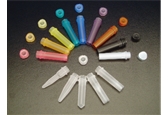
Unlike any other screw cap tube (SCT) manufacturers, BIOplastics manufactures not only natural screw cap tubes but also colored screw cap tubes. Reduce possible cross contamination in your lab by only using color matching tubes and caps.

Polypropylenes are chemically inert, but still exhibit charged groups, static properties and hydrophobic areas. Different types or blends of polypropylene therefore do differ in binding characteristics and consequently charged groups like DNA, RNA, proteins and ions can bind in low amounts to polypropylene. BIOplastics (q)PCR and micro centrifuge tubes are developed with a specific blend of PP. The blend is designed to maximize product functionality and application while providing extremely low binding characteristics to DNA, RNA and proteins. Due to this extremely low binding PP properties the products are superior for detection of low copy numbers of DNA, RNA and proteins permitting reagent components such as ions and enzymes are solely used for the reaction process, not sticking to the vessel surface.
The binding (sticking) ratio of charged molecules like DNA, RNA and proteins between BIOplastics optimized PP blend and regular PP is typically 1:7 (1 to 7).
(see also Anti Static tips PIPETTE TIPS, why, how and when they become favorable).

All BIOplastics plates are flat when purchased, which allows not only easy removal from a stack but also easy pipetting, positioning and removal from cyclers. Plates are stackable in a way that they do not nest or stick together. This is appreciated by those who dislike putting time and effort into de-stacking plates as well as those who require liquid handling automation without de-stacking failures. Some plates are cutable, some are breakable and most of them have 12 centered and 12 non-centered holes. This allows the ability to color code a plate by clicking a BIOplastics grid to the plate holes. This also provides easy orientation for a plate when part of it is cut. BPLPM technology provides “in product” permanent black markings (A-H, 1-12) as well as uniquely permanently coded plates.
Single tubes can be easily opened and closed by using one hand only. Single tubes can be placed in a BIOplastics grid. The grid can be placed in a rack, which can function as transport medium to and from cyclers and can be positioned into the cycler. The X - Y format remains the same removing requirements of individual tube labeling!

BIOplastics polypropylene blend is designed to maximize product functionality while providing extremely low binding characteristics to DNA, RNA and proteins. The design of the caps of BIOplastics tubes is different when compared to other caps. To prevent any residue settling in the cap, regardless opened or closed, BIOplastics designs all its caps without any groves, notches or cavity numbers. This design increases the recovery of liquid and its containing molecules. Furthermore, by nature of the design, liquid will automatically “drop down” to the bottom if the lids are in their closed position.